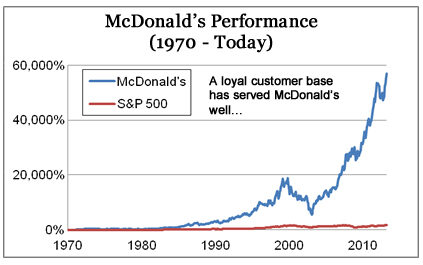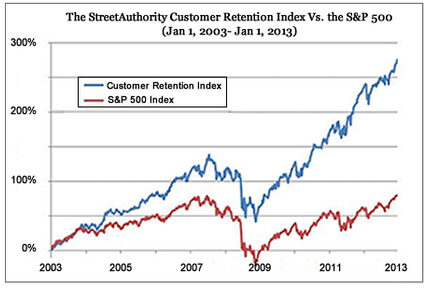It's one of the oldest practices a business can use to make more and more money every year. It's probably been used since the days of the Roman Empire, but one businessman in more recent times mastered the art better than anyone.
Here's his story...
In the 1950s, a traveling salesman from Illinois faced a major problem.
Over the years, it had become harder and harder to sell his Prince Castle Multi-Mixers used to make milkshakes at restaurants. While his brand of mixers was once a market leader, lower-priced Hamilton Beach Corp. blenders had begun to gain market share and were putting him out of business.
But one customer stood out: the McDonald brothers in California had ordered eight of his restaurant-scale Multi-Mixers.
Many salesmen would probably have just been happy to pocket that order, one of his best in years.
But, Ray Kroc was no ordinary salesman. An entrepreneur by nature, he visited McDonald's San Bernardino location and saw the potential to sell even more high-end mixers to a growing chain of McDonald's restaurants.
When the McDonald brothers balked at more aggressive store expansion, Kroc offered to buy them out. In what's arguably one of the most profitable acquisitions of the 20th century, Kroc purchased the company for the sum of $2.7 million in 1961, enough to give each brother $1 million after taxes.
It was Kroc who turned a small but successful California burger joint into the $100 billion global behemoth that McDonald's (NYSE: MCD) is today.
He also made countless McDonald's shareholders rich along the way as he pushed his company to focus on one main objective -- to gain customer loyalty.
First, Kroc knew that convenience was key. Rapid growth of the chain's store footprint all but guaranteed that there would be a McDonald's location convenient to virtually any consumer in the United States, whether they live in a major urban area or a small town.
Kroc also understood the important role branding and advertising played in gaining customer loyalty. His aggressive marketing campaigns ensured that McDonald's was always at the top of consumers' minds.
This helped make McDonald's one of the best Wall Street stories ever...

If you had purchased 100 shares of McDonald's stock for $2,250 when it went public on April 21, 1965, you would now be the proud owner of 74,360 shares of the stock worth nearly $7.5 million. The same investment in the S&P 500 would now be worth just $181,000.
While a good branding strategy worked for McDonald's, it's just one of many ways a company can establish customer loyalty and ensure repeat business...
Take Enterprise Product Partners (NYSE: EPD), which I've profiled before, as another example. This energy MLP locks in business by signing long-term contracts with its customers to guarantee demand and cash flows. This is common among midstream energy businesses.
Back in February, we also mentioned Starbucks (Nasdaq: SBUX) as another great example of a company that commands customer loyalty.
It's simple. The ability to retain a loyal customer base and keep them buying products for years is a hallmark of some of the world's most successful businesses and best performing stocks.
But don't take my word for it. Let's put some concrete numbers behind this concept.
Earlier this month, I shared with my Top 10 Stocks readers an interesting piece of research. I found 10 publicly traded companies that operate in industries as diverse as food service, energy transportation and business services. They all share a common trait -- an established history of retaining customers over the long haul.
To create what I call my 'StreetAuthority Customer Retention Index,' I weighted these 10 stocks by market capitalization and tracked their performance over the past decade...

Over the past decade the StreetAuthority Customer Retention Index trounced the S&P 500 by a more than 3-to-1 margin, returning nearly 276% compared with a gain of just 80% for the S&P.
It gets even better if you reinvest dividends: the group's total return is a remarkable 541% over the past 10 years, blowing the S&P's 126% gain out of the water.
One of the most impressive stats about these 10 companies is that they have collectively boosted their dividend payments by an average of 43.9% in the past three years. I fully expect these stocks to continue increasing payouts and posting impressive gains down the road.
I can't tell you the names every stock in the index -- it wouldn't be fair to my Top 10 Stocks readers. (I have already mentioned three of them -- McDonald's, Enterprise and Starbucks.)
I can tell you, however, exactly why these stocks do so well.
Companies that can lock in a loyal customer base tend to generate strong cash flows and superior profit margins. This puts them in a better position to reward shareholders with dividend raises and value-boosting share buybacks.
All the best,
Elliott Gue
Top 10 Stocks



